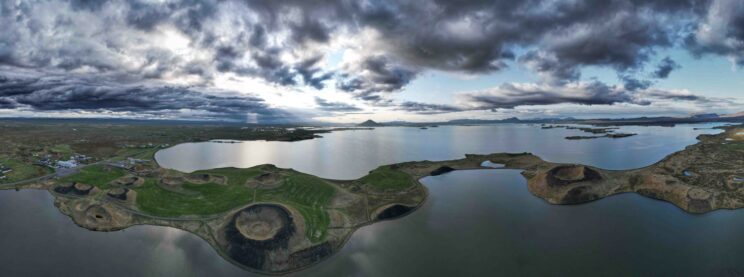AllGenetics is established as one of the leading providers of DNA metabarcoding services in Europe, which is revolutionising biomonitoring along with the use of environmental DNA (eDNA) sampling.

Two decades ago an idea revolutionised the fields of taxonomy and ecology: there were certain (fragments of) genes whose sequence was very similar between individuals of the same species, but different to those of individuals of a different species. These DNA fragments were called ‘barcodes’, and the technique of identifying organisms based on them, DNA barcoding.
With the advancement in DNA technology and the emergence of high-throughput sequencing platforms, that generate millions of reads of output, it became possible to identify hundreds to thousands of individuals by DNA barcoding simultaneously: DNA metabarcoding was born. With this technique, one could take a jar full of insects and ─through the DNA extraction from this ‘insect soup’ and PCR amplification of the target barcode─ obtain the species identification of all of the individuals present, without the need to sort them and work on them one by one.
But, on top of that, it was discovered that organisms constantly shed DNA into their surroundings through various means such as skin cells, excrement, or mucus. We call that environmental DNA (eDNA). In aquatic environments such as lakes, rivers, and the ocean, this genetic material disperses and mixes with the water. In terrestrial environments, organisms leave traces of their DNA in the soil they live and move through or on the flowers that pollinating insects visit. More recently, it was shown that, by filtering the air itself, we can detect and identify the animals, plants, fungi, and microorganisms that live within the sampled area. As eDNA is extracellular, or contained in decaying cells, it is exposed to physical and chemical elements in the environment that degrade it, so we mostly found it in short fragments.
This non-invasive and disturbance-free method for sampling whole ecosystems has become an essential part of the toolkit of ecologists, conservation biologists, and other biodiversity stakeholders. Although there is still work to do on the standardisation of protocols and bioinformatic analysis, results are reasonably robust and reliable.
At AllGenetics we have been providing this service for over a decade now, always making an effort to keep up with the developments in the laboratory, bioinformatics, and analytical processes. As an example, we participated in the European project DNAqua-Net, a multi-disciplinar consortium, working towards standardising eDNA metabarcoding practices for biodiversity monitoring and environmental assessment of freshwater bodies. Also, despite most of eDNA being in degraded into small molecules, we are currently exploring the potential of Nanopore sequencing for long-fragment metabarcoding.
Over these years, we have carried out hundreds of DNA metabarcoding projects for researchers, companies, environmental managers, and public administrations. We have worked with both bulk samples (samples in which the target organisms are physically present) (as in roots and mites) as well as eDNA samples (water, sediment, soil, gut content, or faecal material) (as in this other case), paying special attention to our clients’ projects, adapting the protocols and analyses to their specific needs. Our specialists have also provided bioinformatic training to researchers, to gain knowledge to better understand, design, and perform DNA metabarcoding projects.
Do you think you can be interested in our biomonitoring through DNA metabarcoding services? Do not hesitate to draw us a line!